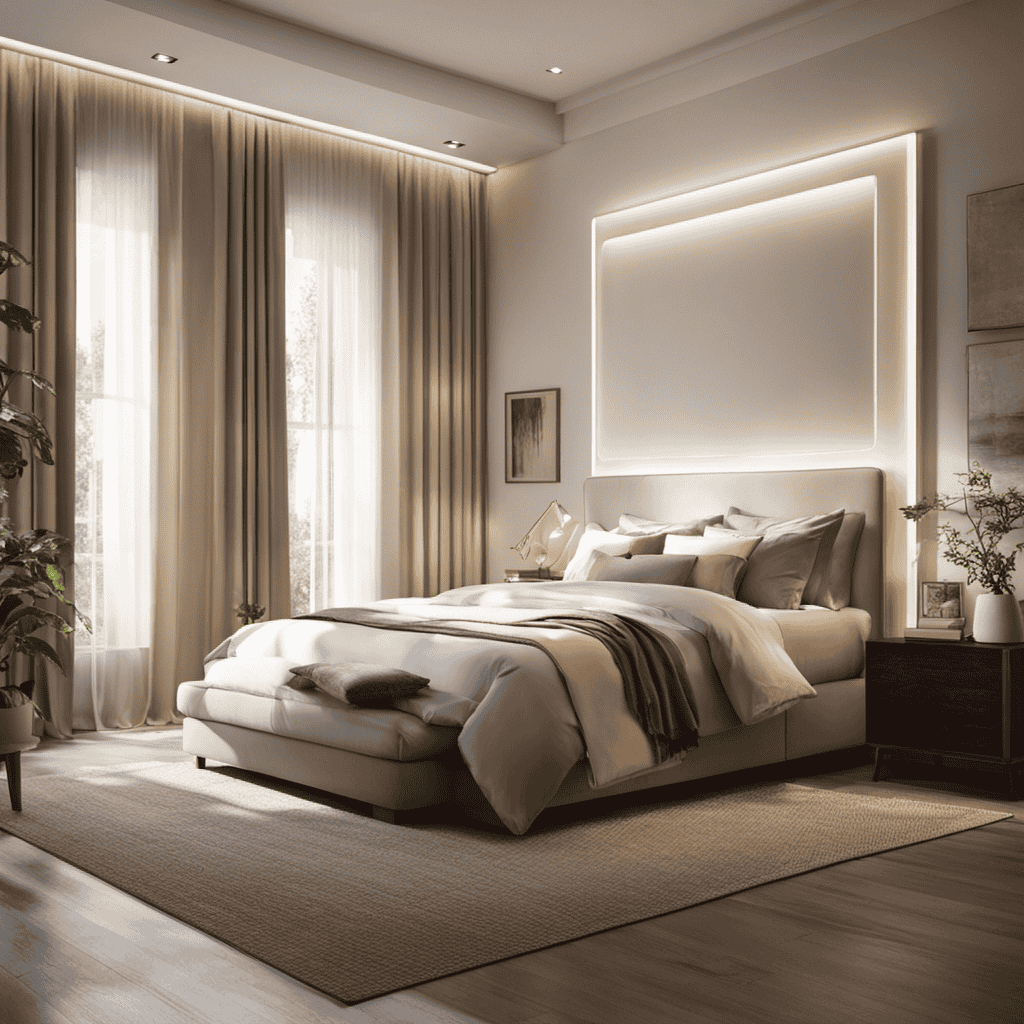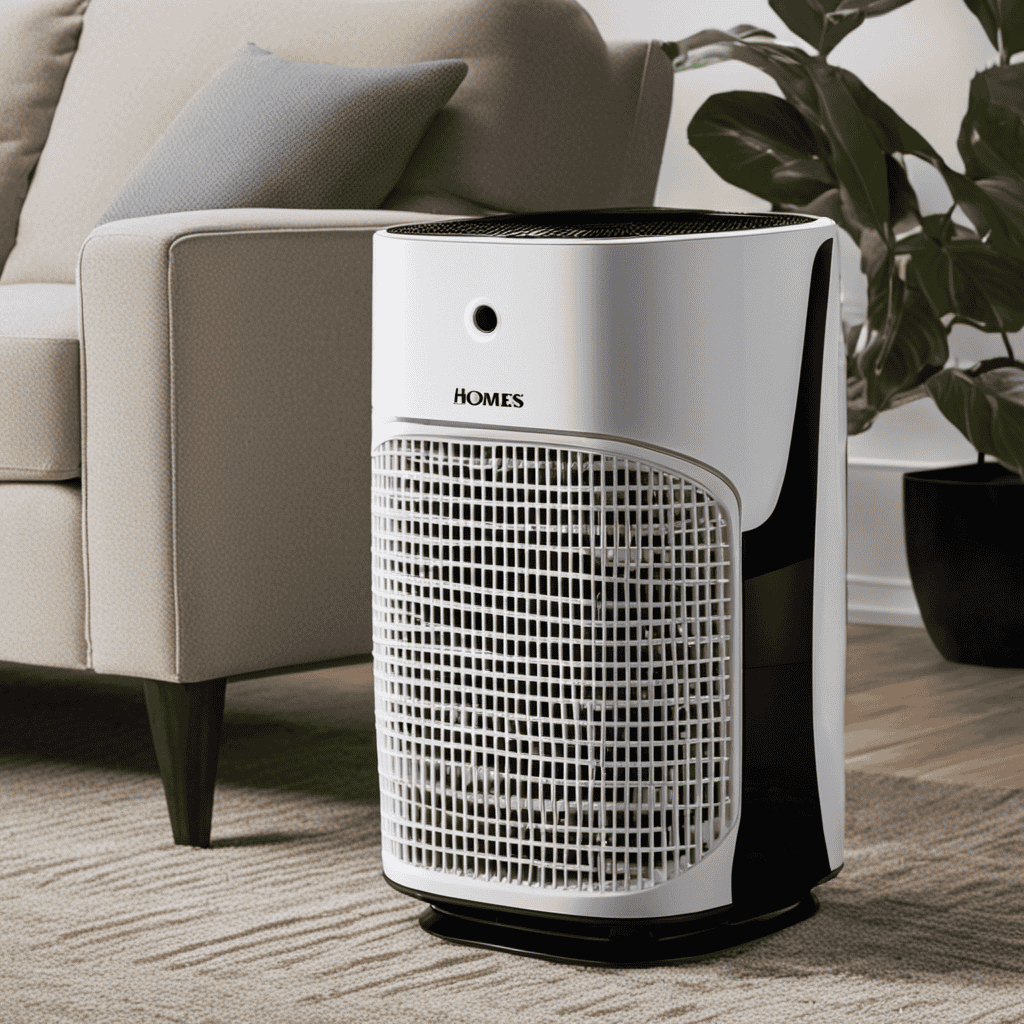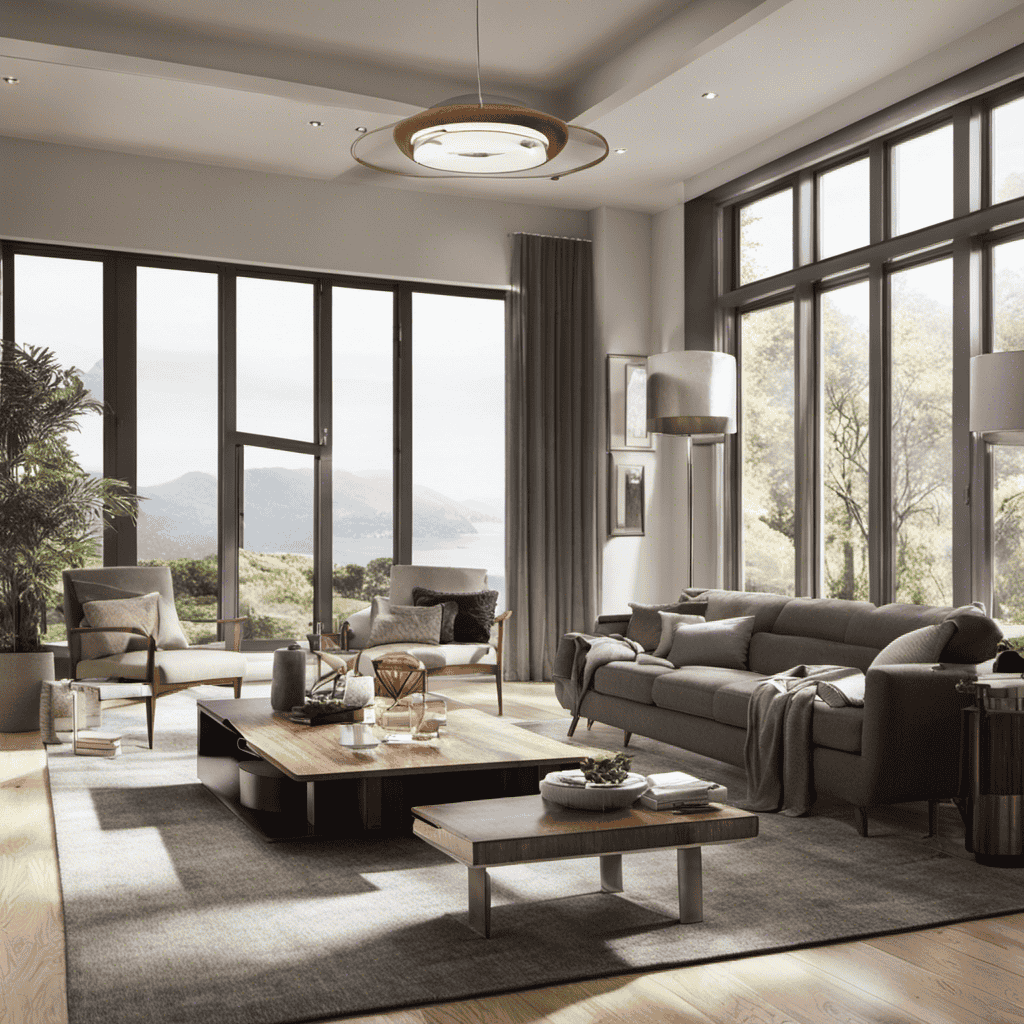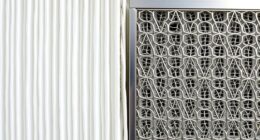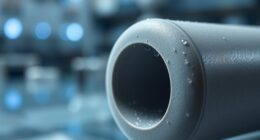Have you ever thought about which air purifier is the best for allergies with so many options available? Rest assured, your search ends here.
In this article, I will guide you through the benefits of using an air purifier for allergies, factors to consider when choosing one, and the types of air purifiers that are most effective.
With expert tips and real-life testimonials, you’ll gain the knowledge and evidence-based advice necessary to maximize the effectiveness of your air purifier and find relief from your allergies.
Key Takeaways
- Air purifiers with HEPA filters are highly effective for allergy relief, as they capture 99.97% of airborne particles as small as 0.3 microns.
- Different filters target specific allergens such as pollen, pet dander, and dust mites, so it’s important to choose a filter specifically designed for your allergies.
- Consider factors such as room size, filter type, and noise level when choosing an air purifier.
- Regular maintenance, including filter replacements and cleaning, is essential for optimal performance and effective allergen removal.
Benefits of Using an Air Purifier for Allergies
Using an air purifier can greatly reduce allergy symptoms and provide relief. When it comes to choosing the right air purifier for allergies, there are several factors to consider.
One important factor is the type of filters used in the air purifier. Different filters target different allergens, so it’s crucial to choose one that suits your specific needs. HEPA filters, for example, are highly effective in capturing airborne particles as small as 0.3 microns, including pollen, pet dander, and dust mites. Activated carbon filters are also beneficial as they can remove odors and harmful chemicals from the air. Additionally, some air purifiers come with UV-C lights that can kill bacteria and viruses.
Considering these factors will help you make an informed decision when selecting an air purifier that will effectively alleviate your allergy symptoms. Transitioning into the subsequent section, let’s now explore other factors to consider when choosing an air purifier.
Factors to Consider When Choosing an Air Purifier
When choosing an air purifier, you should consider factors such as the size of the room, the type of filter, and the noise level.
Filter technology plays a crucial role in the effectiveness of an air purifier. HEPA filters are considered the gold standard as they can capture particles as small as 0.3 microns, including pollen, dust mites, and pet dander. Activated carbon filters are also beneficial for removing odors and volatile organic compounds (VOCs).
Additionally, you should take cost considerations into account. Some air purifiers require regular filter replacements, which can add up over time. Look for models with washable or long-lasting filters to save on maintenance costs.
Lastly, noise level is important, especially if you plan to use the air purifier in a bedroom or office space where quiet is essential.
Types of Air Purifiers That Are Effective for Allergies
To effectively combat your allergies, consider an air purifier with HEPA filters. HEPA stands for High Efficiency Particulate Air, and these filters are designed to capture 99.97% of airborne particles as small as 0.3 microns. This makes them highly effective at removing allergens such as pollen, dust mites, pet dander, and mold spores from the air.
When choosing an air purifier, it’s important to consider the brand and cost. Some popular air purifier brands known for their allergy-fighting capabilities include Honeywell, Blueair, and Coway. Cost considerations include the initial purchase price, as well as ongoing maintenance costs for filter replacements.
By investing in an air purifier with HEPA filters, you can create a cleaner and healthier environment for allergy relief.
Transition: Now that we understand the importance of HEPA filters in combating allergies, let’s explore why they are considered the gold standard for allergy relief.
HEPA Filters: the Gold Standard for Allergy Relief
Now that we know why HEPA filters are the gold standard for allergy relief, let’s explore how they capture and remove airborne particles from the air.
HEPA filters are highly effective at trapping allergens and other tiny particles in the air. Here’s how they work:
-
HEPA filters use a dense mesh of fibers to physically trap particles as small as 0.3 microns, including pollen, pet dander, mold spores, and dust mites.
-
The filters create a maze-like structure that forces air to pass through multiple layers, increasing the chances of capturing particles.
-
HEPA filters can remove up to 99.97% of airborne particles, making them incredibly effective in reducing allergens and improving air quality.
-
Many reputable air purifier brands incorporate HEPA filters in their devices, ensuring maximum filtration efficiency and providing relief for allergy sufferers.
When choosing an air purifier, look for brands that use HEPA filters for optimal effectiveness and allergy relief.
How to Determine the Right Size Air Purifier for Your Space
If you’re unsure about the right size air purifier for your space, consider the square footage of the room you want to purify. Determining the optimal air purifier size is crucial for effectively improving indoor air quality and reducing allergy symptoms. To calculate the required air purifier capacity, use the following rule of thumb: for every 2 air changes per hour (ACH), multiply the square footage of the room by 2. For example, a 200 square foot room would require an air purifier with a minimum capacity of 200 cubic feet per minute (CFM) to achieve 2 ACH. This table illustrates the recommended air purifier capacity based on room size:
| Room Size (Square Feet) | Minimum Required Air Purifier Capacity (CFM) |
|---|---|
| Up to 150 | 75 |
| 150-300 | 150 |
| 300-450 | 225 |
Understanding the importance of CADR (Clean Air Delivery Rate) and its impact on allergy sufferers is essential.
Understanding CADR and Its Importance for Allergy Sufferers
Understanding the importance of CADR and how it impacts allergy sufferers is crucial for improving indoor air quality. CADR, or Clean Air Delivery Rate, is a measurement that indicates the effectiveness of an air purifier in removing pollutants from the air.
Here are four reasons why CADR is important for allergy sufferers:
- CADR measurement helps determine the air purifier’s ability to remove allergens such as pollen, dust mites, and pet dander.
- Higher CADR values mean faster and more efficient air purification, providing allergy relief.
- Proper placement of the air purifier is essential to ensure that it can effectively clean the air in the room.
- CADR can help allergy sufferers choose an air purifier suitable for the size of their room, ensuring optimal performance.
Additional Features to Look for in an Allergy-Friendly Air Purifier
Another important feature to consider when selecting an allergy-friendly air purifier is the presence of a HEPA filter. HEPA stands for High Efficiency Particulate Air and these filters are designed to capture 99.97% of airborne particles as small as 0.3 microns. This includes common allergens such as pollen, dust mites, pet dander, and mold spores.
In addition to a HEPA filter, there are several other additional features to look for in an allergy-friendly air purifier. These include activated carbon filters, which can help remove odors and chemicals from the air, as well as UV-C light technology, which can kill airborne germs and bacteria. Some air purifiers also come with smart features such as Wi-Fi connectivity and smartphone control, allowing you to monitor and control your air purifier from anywhere. These additional features can enhance the effectiveness and convenience of your air purifier, providing you with optimal allergy relief.
Transition: Now that we have explored the additional features to look for in an allergy-friendly air purifier, let’s discuss the importance of regular maintenance for optimal allergy relief.
The Importance of Regular Maintenance for Optimal Allergy Relief
When it comes to maintaining optimal allergy relief, there are several key points to consider.
First and foremost, regular cleaning of air filters is essential to ensure that they are functioning properly and effectively removing allergens from the air.
Additionally, preventing dust build-up in the home through regular dusting and vacuuming can help to minimize the presence of allergens.
Lastly, it is crucial to ensure efficient air circulation in the home by keeping air vents and ducts clean and unobstructed.
Following these practices will contribute to a healthier indoor environment and provide long-lasting allergy relief.
Cleaning Air Filters Regularly
To keep your air purifier working effectively, make sure you’re regularly cleaning the air filters. Cleaning the air filters is an essential part of maintaining good indoor air quality and preventing allergies.
Here are a few reasons why regular cleaning is important:
-
Improved Air Flow: When the air filters are clogged with dust and debris, it restricts the airflow, making the air purifier less effective in removing allergens from the air.
-
Longer Lifespan: Regular cleaning prevents the air filters from getting overloaded and damaged, extending the lifespan of your air purifier.
-
Cost Savings: By regularly cleaning the air filters, you can avoid the need for frequent filter replacements, saving you money in the long run.
-
Health Benefits: Clean air filters ensure that the air purifier is efficiently removing allergens and pollutants from the air, providing you with cleaner, healthier indoor air.
Keeping your air filters clean is a simple yet crucial step in maintaining optimal indoor air quality and preventing allergies.
Preventing Dust Build-Up
Regularly cleaning your air filters is key in preventing dust build-up and maintaining optimal indoor air quality. Dust particles, dust mites, and pet dander are common allergens that can accumulate in your air filters over time. By cleaning your air filters on a regular basis, you can effectively reduce these allergens and improve the overall air quality in your home.
To further emphasize the importance of cleaning air filters, let’s take a look at the following table:
| Allergens | Potential Health Effects | Cleaning Frequency |
|---|---|---|
| Dust particles | Irritation, respiratory issues | Every 1-2 months |
| Dust mites | Allergic reactions, asthma symptoms | Every 2-3 months |
| Pet dander | Allergic reactions, respiratory issues | Every 2-3 months |
By following these recommended cleaning frequencies, you can prevent dust build-up, reduce the presence of dust mites, and minimize pet dander in your indoor air. This will greatly contribute to creating a healthier and more comfortable living environment.
Transitioning to the next section, ensuring efficient air circulation is another crucial aspect in maintaining optimal indoor air quality.
Ensuring Efficient Air Circulation
Ensuring efficient air circulation is essential for maintaining optimal indoor air quality and creating a comfortable living environment. Improving indoor air quality and reducing allergens in the home can be achieved by implementing a few simple strategies:
- Regularly clean and replace air filters in HVAC systems
- Use ceiling or portable fans to promote air movement
- Open windows and doors to allow fresh air to enter
- Utilize exhaust fans in bathrooms and kitchens to remove moisture and odors
By following these practices, airborne pollutants and allergens such as dust, pet dander, and mold spores can be effectively reduced. This not only helps to alleviate allergy symptoms but also contributes to a healthier living space.
However, for individuals with severe allergies, comparing different brands and models of air purifiers for allergies may be necessary to find the most suitable option for their specific needs.
Comparing Different Brands and Models of Air Purifiers for Allergies
When it comes to selecting the right air purifier for allergies, it’s important to consider three key factors: filter effectiveness rankings, noise level comparisons, and energy consumption analysis.
Filter effectiveness rankings provide valuable insight into how well the purifier can capture and remove allergens from the air.
Noise level comparisons help determine if the purifier operates quietly enough for use in bedrooms or other quiet spaces.
Lastly, energy consumption analysis gives an indication of how much energy the purifier will consume over time, which can impact long-term costs.
Filter Effectiveness Rankings
The filter effectiveness rankings can help determine the most recommended air purifier for allergies. When considering different air purifier brands and models, it is essential to assess their filter effectiveness. Here are some key factors to consider:
-
HEPA filtration: Look for air purifiers with True HEPA filters, as they can trap particles as small as 0.3 microns, including allergens like pollen, dust mites, and pet dander.
-
Activated carbon filters: These filters are effective in removing odors, chemicals, and volatile organic compounds (VOCs) from the air.
-
Pre-filters: Pre-filters capture larger particles and prolong the lifespan of the main filter by preventing clogging.
-
Filter replacement frequency: Consider the cost and frequency of filter replacements to ensure long-term affordability.
By considering these factors, you can make a more informed decision about the best air purifier for your allergies.
Now, let’s move on to comparing the noise levels of different models.
Noise Level Comparisons
After considering the filter effectiveness rankings, it’s important to also take into account the noise level of an air purifier, especially if you’re looking for a quiet operation. Nobody wants a noisy machine disturbing their peaceful environment.
When comparing sound levels, it’s crucial to look at the decibel (dB) ratings. A typical conversation is around 60 dB, while a quiet library is around 40 dB. In general, air purifiers with lower dB ratings tend to be quieter.
Some manufacturers provide this information in their product specifications, allowing you to compare and choose a model that suits your needs. Keep in mind that a quiet operation doesn’t necessarily mean a compromise on performance. You can still find air purifiers that effectively filter allergens while keeping noise levels low.
Energy Consumption Analysis
You can find air purifiers that effectively filter allergens while keeping noise levels low. When considering the energy efficiency of an air purifier, it’s important to do a cost analysis to determine the long-term benefits. Here are some key points to consider:
-
Look for an air purifier with an Energy Star certification. These models meet strict energy efficiency guidelines and can save you money on your electricity bill.
-
Consider the size of the room you want to purify. Smaller rooms require less energy to clean the air, so choosing the right size can help optimize energy consumption.
-
Look for air purifiers with adjustable fan speeds. This allows you to customize the energy usage based on the air quality and your needs.
-
Consider the annual operating costs of the air purifier, including filter replacements. Some models may have higher upfront costs but lower maintenance costs in the long run.
Real-Life Testimonials From Allergy Sufferers Who Use Air Purifiers
If you’re looking for real-life testimonials from allergy sufferers who use air purifiers, check out these reviews from happy customers.
Many users have shared their experiences and the positive impact air purifiers have had on their allergies.
One user, Sarah, mentioned how her constant sneezing and watery eyes reduced significantly after using an air purifier in her bedroom.
Another customer, John, noted that his asthma symptoms improved greatly, allowing him to sleep better at night.
These real-life experiences highlight the effectiveness of air purifiers in alleviating allergy symptoms.
User reviews consistently mention the reduction of allergens in their homes and the overall improvement in air quality.
These testimonials provide evidence that air purifiers can be a valuable tool for allergy sufferers in creating a healthier living environment.
Expert Tips for Maximizing the Effectiveness of Your Air Purifier for Allergies
When it comes to maximizing the effectiveness of your air purifier for allergies, there are three key points to consider: filter types, choosing the right size, and maintenance and cleaning tips.
Firstly, filter types play a crucial role in removing allergens from the air, and it’s important to choose a filter that is specifically designed to target allergens such as pollen, dust mites, and pet dander.
Secondly, selecting the right size of air purifier is essential to ensure that it can effectively clean the air in your space.
Filter Types for Allergies
The best air purifiers for allergies typically use HEPA filters to trap allergens. HEPA stands for High Efficiency Particulate Air, and these filters are designed to capture particles as small as 0.3 microns in size.
However, there are other filter options available that can also be effective in reducing allergens in the air. Here are some popular air purifier options and the best filter for allergies:
-
Activated carbon filters: These filters are great at removing odors and chemicals from the air, making them a good choice for those with sensitivities to strong smells.
-
Ultraviolet (UV) light filters: UV light can kill bacteria, viruses, and mold spores in the air, which can be beneficial for individuals with respiratory allergies.
-
Ionizers: These filters work by releasing ions into the air, which attach to allergens and cause them to stick to surfaces, effectively removing them from the air.
-
Electrostatic filters: These filters use an electric charge to attract and trap allergens, making them an excellent choice for capturing smaller particles.
While HEPA filters are the most common and reliable option for allergy sufferers, exploring these other filter types may provide additional benefits depending on your specific needs and sensitivities.
Choosing the Right Size
Choosing the right size for an air purifier can ensure optimal performance and effectiveness. When it comes to selecting the correct air purifier for your room, there are several factors to consider for room size. A general rule of thumb is to choose an air purifier that can clean the air in your room at least twice per hour. This means that the CADR (Clean Air Delivery Rate) of the air purifier should be able to handle the square footage of your room. Additionally, you should also consider the height of the ceiling, as higher ceilings may require a larger air purifier to effectively circulate the air. To help you find the right size for your room, here is a handy air purifier sizing guide:
| Room Size (Square Feet) | Recommended CADR (Clean Air Delivery Rate) |
|---|---|
| Up to 150 | 100-150 |
| 150-300 | 150-250 |
| 300-450 | 250-350 |
Maintenance and Cleaning Tips
Regular maintenance and cleaning of your air purifier is essential to keep it functioning properly and to extend its lifespan. Here are some maintenance tips and cleaning techniques to help you keep your air purifier in top shape:
-
Change the filters regularly: Filters trap pollutants and contaminants, but over time, they get clogged and lose their effectiveness. Replace them according to the manufacturer’s instructions.
-
Clean the exterior regularly: Dust and dirt can accumulate on the surface of your air purifier, affecting its performance. Use a soft cloth or brush to wipe away any debris.
-
Vacuum the pre-filter: The pre-filter captures larger particles, like pet hair and dust. Regularly vacuuming it will remove these particles and prevent them from clogging the main filter.
-
Check the fan and vents: Dust can build up on the fan blades and vents, hindering airflow. Clean them gently with a brush or a damp cloth to ensure optimal performance.
Frequently Asked Questions
Are There Any Alternative Methods for Reducing Allergies Besides Using an Air Purifier?
There are alternative treatments and natural remedies for reducing allergies, besides using an air purifier. These can include allergy medications, nasal irrigation, avoiding triggers, using allergen-proof bedding, and keeping the home clean.
Can Air Purifiers Completely Eliminate All Allergens From the Air?
Air purifiers can greatly reduce allergens in the air, but they may not completely eliminate them. However, they are a beneficial alternative to other allergy treatments and can provide relief for many sufferers.
How Often Should I Replace the Filters in My Air Purifier?
When it comes to replacing air purifier filters, it’s important to consider the manufacturer’s recommendations. Regular filter replacement ensures optimal performance and helps to effectively remove allergens from the air, improving indoor air quality.
Can Air Purifiers Help With Allergies Caused by Pets?
Can air purifiers really help with pet allergies? I’ve done my research, and the evidence shows that some air purifiers are highly effective in removing pet allergens from the air. The best air purifier brands for allergies include Honeywell and Dyson.
Are There Any Potential Side Effects of Using an Air Purifier for Allergies?
There are potential risks and long-term effects associated with using an air purifier for allergies. It’s important to consider factors such as ozone emissions, filter maintenance, and the overall effectiveness of the purifier in reducing allergens.
Conclusion
In conclusion, when it comes to allergies, investing in the right air purifier can make a world of difference. With their ability to filter out allergens and improve indoor air quality, air purifiers are a valuable tool for allergy relief.
Just like a knight in shining armor, a high-quality air purifier can shield you from the onslaught of allergens, providing a safe haven for your respiratory system.
By considering factors such as filter type, size, and maintenance, and by comparing different brands and models, you can find the perfect air purifier to combat your allergies and enjoy a breath of fresh air.

